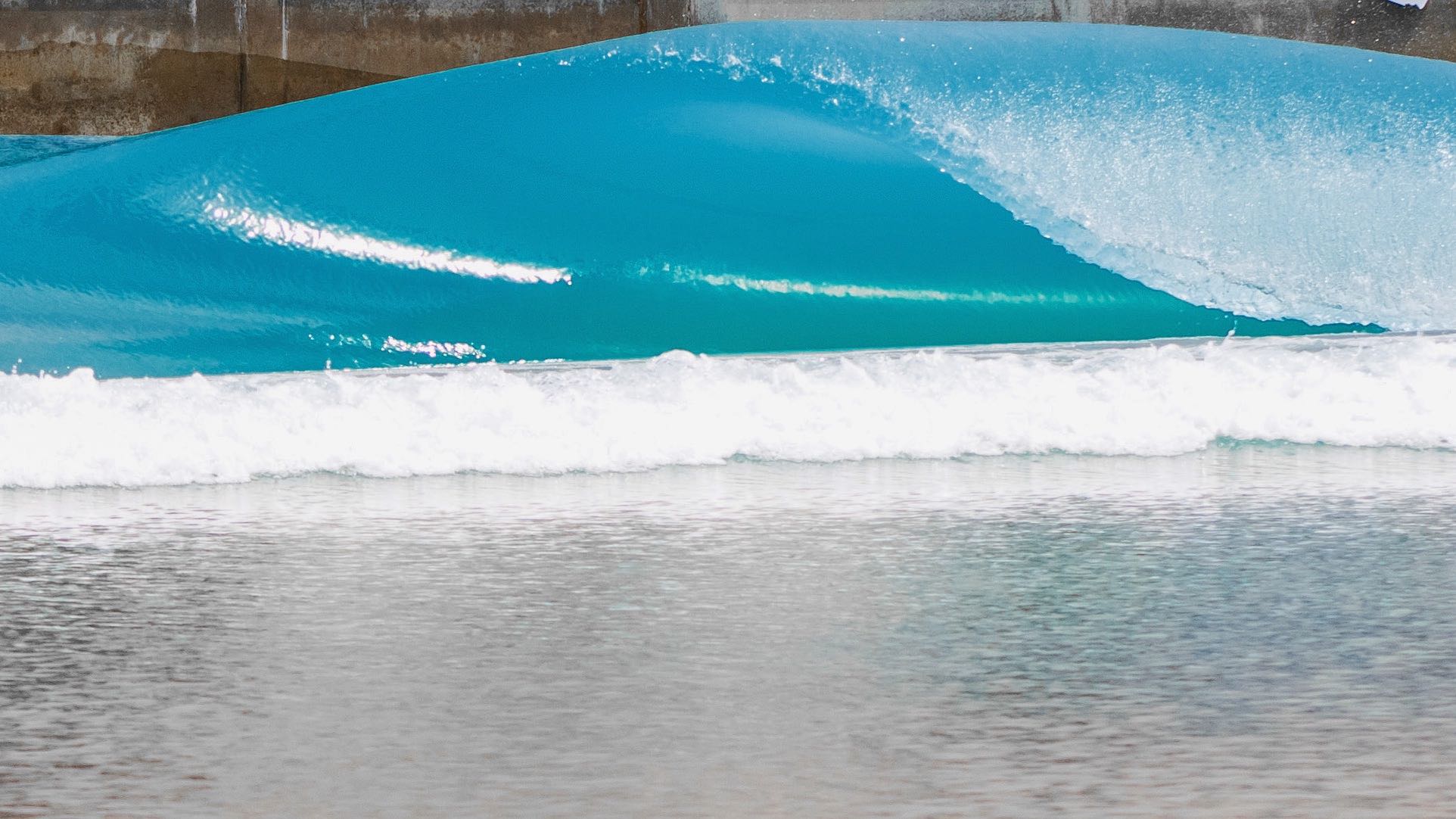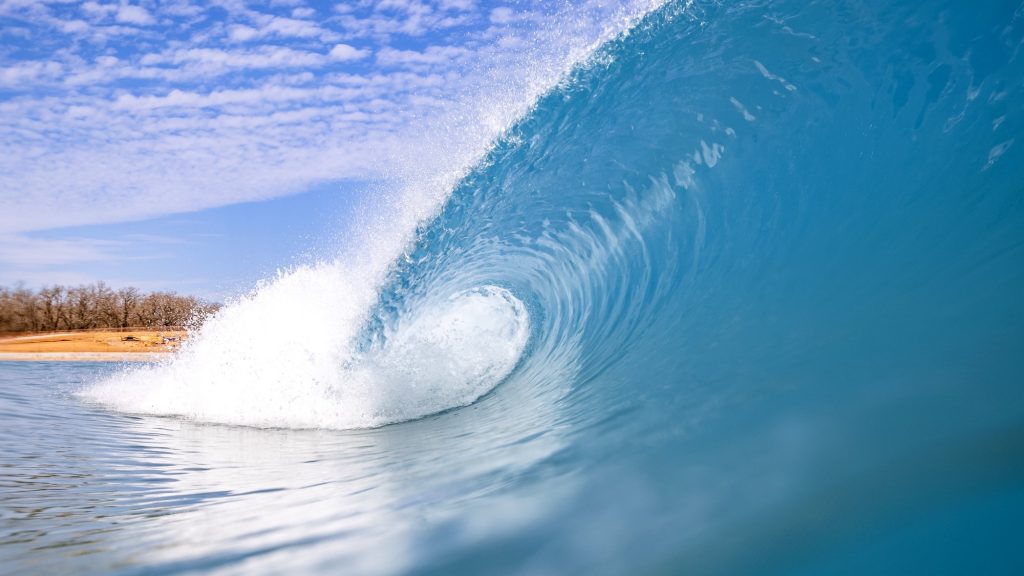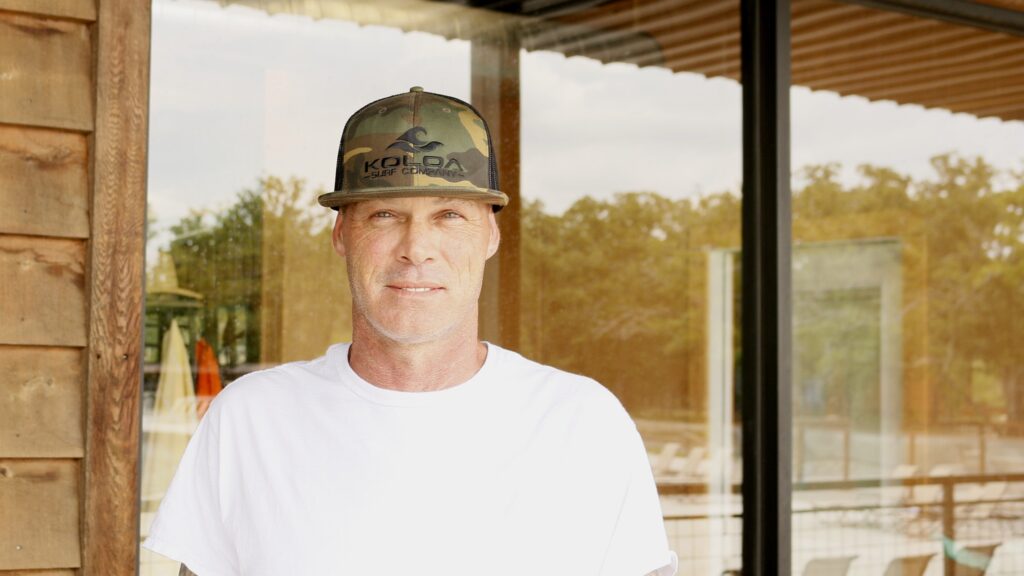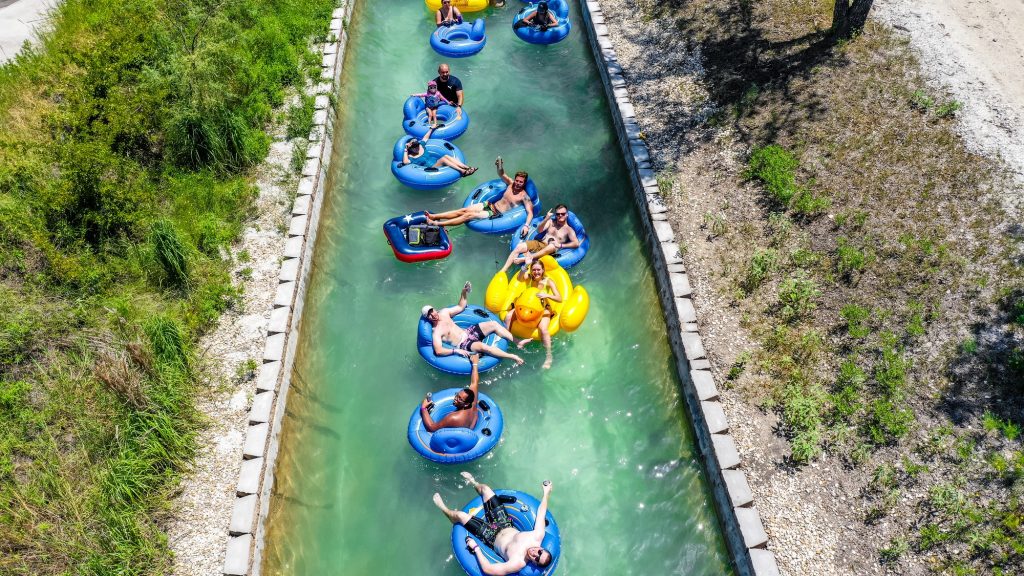Discover the process behind Waco Surf’s water treatment

Behind the veil of every wave you ride in a pool, there is a team that dedicates its time to making sure that magic happens. Michael Holder is one of those people – a wave basin Swiss army knife who knows everything there is to know about keeping the wave pool at Waco Surf running and in tip-top shape. Holder has been working here for nearly seven years, starting as a lifeguard/park ambassador and working his way up to his current role as the Facilities and Maintenance Director. You might say it’s a dream job to spend your days working alongside pumping surf, but as with any job, it presents its own unique set of challenges and difficulties. Regardless, it’s all worth it to Michael when he sees the stoke on a surfer’s face after a session. We caught up with the Waco native and wave tank maintenance expert to talk about the ins and outs of upkeep at one of the world’s busiest surf parks.
What are your job duties?
Make sure the park’s ready every day – all the water quality, construction projects, maintenance, groundskeeping, and everything that pertains to that. We basically keep it going. We fix everything, make sure everything looks good, and make sure the water quality is good.
How do you go about measuring the water quality?
We use DPD kits and then we have wall cams that tell us where our water is at. There are turbidity meters, which tell us the clarity of the water. All that is part of the process. We pump several million gallons of water and are pulling in several thousand gallons a minute. As that water is pulled in, it’s injected with bleach, an algaecide, and an acid to keep the PH where it needs to be. Then we also put ozone gas in it to sanitize it.

One of the owners, Mike Schwaab, was bragging about two microns per something or other?
Yeah, our turbidity is at 1.4, so that’s crystal clear water, and for a few million gallons that is pretty good. It’s pretty hard to get that number, especially with the bather load, the surfboard wax, the sunscreens, and body salts. All of that stuff adds to the turbidity of the water. Chemical solids add to the turbidity, too. So we’re able to keep the conductivity of the water very low, which keeps salts and everything like that out. And then with our filtration system, we keep all the chemicals out – the surfboard wax and stuff like that.
If there was one thing that you wish you didn’t have to deal with as far as the filtration and cleaning process, what would it be? What’s the biggest offender that makes your job difficult?
We’ve made a lot of improvements, so that’s helped. A big problem out here was the fine sediment from the clay bentonite. That stuff gets in the water and the sediment is so fine that the filter systems won’t catch it. We went to a smaller grade media, so it’s almost like sand and is able to catch those finer solids. Then we also use a polymer. It’s kind of similar to glue that you put in water. It’s a polymer and coagulant basically, and it catches all those super fine sediments, the wax and stuff like that. When it runs through that filter, through that media, it’s able to capture it in that glass. And then we backwash that when we get to certain pressures in the eggs (a form factor for mega-common media) filters, it tells us it’s time to waste water so those eggs will stop catching as much as they need to because it comes in from bottom to top. As that water is running through this super fine glass media, it’s catching those fine solids. And then when it comes back out, it goes back into the returns, into the pool. So once those eggs build pressure, then we’ll backwash and that basically cleans them all out to start that cycle again. We do that a couple times a day and the system dictates when we do that all based on pressure.

Wow. You just totally nerded out.
Yeah. There’s a lot to it. PH is key, keeping the acid in there to keep it at a 7.5 because if the pH is high you’re just burning through bleach trying to keep it chlorinated. We keep it at a 1.5 free chlorine, which would be the excess chlorine, so the pool stays at probably a three and then the free chlorine is required to be at least a one. To keep that water balance, you have to have the pH correct. The chlorine has to be perfect to maintain that. And then, as I said, we sanitize the water with the ozone. With a bigger bather load and more turbidity, it kind of takes away the chemicals, too. On Saturdays, we’ll have a thousand people on the beach and all those people are getting in and out of the water, so that’s more bather load. We manage that by the pumps. They’re automated, so when the bleach starts going down or the acid goes up, or vice versa, the pumps will automatically cut on and we’ll keep it at the same level all the time.
So you treat the water differently in March than you do in July?
Yeah, because you have a lot more bather load, for sure. And then the sun, too. The sun eats the bleach out of the pool. It takes that chemical out pretty quickly, so we use a lot more chemicals in the hot summers.
What about the wave action? Does the wave action help your job or does it make it more difficult?
You know, making a wave like we’ve made it, it’s a pretty tough task. And to maintain it is a lot because the force of that wave is not what people expect, especially when you’re building something like that. It actually helps that water moves around like it does because we don’t have any algae growth. So if you’ve got treated water and you’ve got sand or anything like that in it, that’s where that algae will start growing, on that material, especially if it just sits all the time. It’s beneficial that we’re making waves. It’s a little bit easier to manage when it comes to algae and algae growth.

What would you say is your favorite part of the job?
Customers being happy and people enjoying the place for what it is. That’s probably the best thing. It’s a unique place. You don’t see this every day, all that we have out here, so I like that, too.
Is there a “most challenging” part of your job? Something you could do without?
Winter and spring work is always tough because, for example, we’ll clean that lazy river out, and we’ll have it all ready to go, and it’ll pour rain. So, basically, you have to start all over. We’re trying to work on the surf and we have that small window before opening to get all of this work done. This year we had 60 days to get it all done and then it rained for three days and we had to start over. So you go back to square one, do it again. And if it rains again, you start at square one again. It’s a constant battle. That’s a headache sometimes because you think it’s done, it looks great, and then a huge storm comes and wipes it out. That’s tough. But we make it work.
I saw someone in the empty lazy river with a mini bulldozer.
Yup. We’re cleaning that thing up and getting ready to fill it. And see, we did that last Wednesday. Then we had that huge storm with the hail and all the rain. We got six inches of rain out here in a couple of hours. When we got here Friday morning, we had to start over and do it all again. And we’ll probably do that a couple more times before it opens. But we’re prepared. We know what’s going to happen. You can’t control the weather and you try to control the waves as best you can, but it’s all part of the process.
Related Coverage
